
26 Feb Is it monumentally stupid not to have a mobile ad strategy?
A year from now (perhaps even sooner), magazine media publishers will be slapping themselves on their heads saying, “How could we have been so stupid?!” Why?
Because far too many magazine media publishers in 2015 have been completely blind to their own lack of vision and innovation when it comes to an advertising strategy for mobile platforms.
Many, if not most, magazines’ mobile advertising “strategies” still consist of simply squeezing the same (mostly ineffective) banner ads that run on their desktop sites onto a screen that is a fraction of the size of the desktop.
And when — surprise, surprise — those “mobile ads” don’t work, publishers and ad directors tend to leap to the conclusion that mobile advertising is worthless. Without a strategy and without doing the hard, innovative work of creating ads to fit the platform and the unique expectations of mobile users, publishers are crippling their ability to climb aboard the advertising vehicle of the future and create a significant new source of revenue.
If there was ever writing on the wall for magazine publishers, the need to gear up for mobile advertising is it, and it is writ very, very large.
Mobile ad spending could hit 90 per cent of digital spending
Consider this: Mobile ad spending, already at 23 per cent of all US digital ad dollars, will become 92 per cent of all US digital spending in five years, according to Borrell Associates. Also consider that mobile advertising will account for more than a quarter of total US marketing budgets by 2018, according to eMarketer.
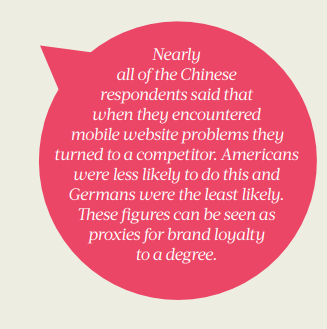
Globally, mobile ad revenue hit US$19.3 billion in 2014, almost double the previous year, driven by a 124 per cent growth in mobile display advertising, according to a report by the Internet Advertising Bureau (IAB).
In China, the world’s largest smartphone market with 527 million owners, advertisers for the first time ever are expected to spend more on digital than on television. Just three years ago, a mere 14 per cent of Chinese ad dollars went to digital and almost half to television, according to ad agency Zenith Optimedia.
“This impressive rise in mobile advertising is unquestionably a worldwide phenomenon, with strong year-over-year upticks being seen in every corner of the globe,” IAB vice president Anna Bager said. “These powerhouse numbers directly reflect mobile’s rapidly increasing role as a vital part of the marketing media mix.

“As mobile ad campaigns become easier to plan, create, buy, and measure — in great part due to programmatic strategies — these operational efficiencies are spurring the growth of the mobile display ad market,” she said.
“More fundamentally, the pervasiveness of mobile consumption has sparked a change in the mind-set of marketers,” said Daniel Knapp, IAB report author and director of advertising research for global information company IHS. “Increasingly, they come to see mobile as a medium in its own right that rewards abandoning engrained desktop-based marketing principles in favour of new creative, tactical and strategic opportunities.”
Too many publishers have no mobile ad strategy
Despite this overwhelming evidence, the response of magazine publishers is reminiscent of their response to the arrival of the internet: intransigence, reluctance, and/or inaction.
“The majority of mobile ads still resemble mini-desktop ads,” research firm Forrester asserted in its 2014 “Mobile Advertising: It’s Time to Get Personal” report.
Instead of optimising mobile ads for the unique needs of mobile readers and the unique attributes (and limitations) of the mobile platform, publishers are taking desktop ads and putting them on their mobile sites. The assumption is that both platforms are digital, so why not?

“Generally, people (in my experience, particularly ad sales staff and agency planners and buyers), are still unfamiliar with the mobile channel and either don’t know the questions to ask or feel they should know the answers — so they don’t feel they can ask the questions,” said Mark Challinor, former director of mobile platforms for the Telegraph Media Group, in an INMA blog post.
For example, in the UK almost half of all magazine media publishers haven’t even taken the time to optimise their sites for mobile devices, never mind optimising their mobile ads, according to native advertising company Vibrant Media.
Intransigent publishers get support
Magazine publishers can still find support for their ostrich-like behaviour. In early 2014, a Telemetrics/xAd report found that nearly half of smartphone and tablet readers hadn’t clicked on a mobile ad in a month because they weren’t interested in the offering.
The Forrester study also found that nearly 60 per cent of US smartphone owners consider in-app ads to be interruptive. “While it seems as if mobile advertising is poised for success, in reality, most marketers still aren’t seeing great performance and are having difficulty justifying spend,” the Forrester report declared.
“If you talk to the [ad] industry, everything is great and taking off,” report author Jennifer Wise told VentureBeat. But those upbeat comments are “not about the results” but about everything else: advertiser acceptance, programmatic advertising, and cool tech tools, Wise said.
Publishers and ad directors who are already inclined to dismiss mobile advertising embrace those kind of comments and survey results as evidence that mobile is worthless. “Mobile web ads are basically useless,” Dorian Benkoil, SVP at Teeming Media told Digiday. “The pricing is very low, and there is not enough inventory to be meaningful.”
That’s like blaming the patient for her illness, and then declaring the illness to be fatal, and giving up on all treatments and research.
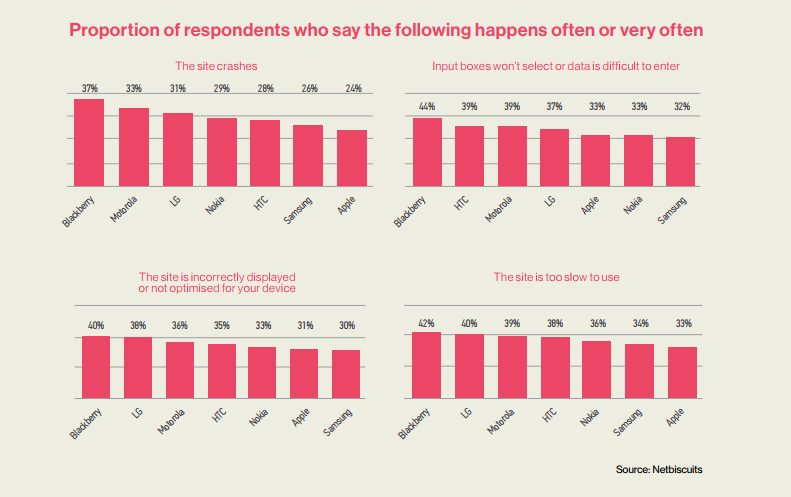
Looking for blame, not solutions
Those same publishers and ad directors also point to the lack of revenue from mobile ads. It does not occur to them that the problem could be the ads themselves, not the platform. The mobile ad “failure” (which is really the failure of desktop ads on mobile devices) becomes a self-fulfilling prophecy. Ads that are not optimised for either the mobile platform or the mobile customers are doomed from the start.
Another metaphor comes to mind: It’s like going fishing without baiting the hook. Such an attitude is inexcusable in light of both the need to create new revenue streams and the massive migration of magazine readers to mobile devices not only for content consumption but also for researching and making commercial transactions.
Consumers would rather ads than fees
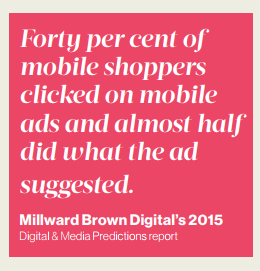
And it turns out that mobile device users not only don’t mind advertisements, they actually want the ads as a means of keeping their apps and other services free of charge. Research from technology research firm Gartner forecasts that free app downloads will skyrocket from 100 billion in 2013 to more than 270 billion by 2017.
Nearly 60 per cent of respondents who downloaded apps preferred free, ad-supported apps to those that required some form of payment, according to a US poll by research firm Zogby Analytics in October 2014 for the Digital Advertising Alliance. By a margin of nearly five-to-one, mobile users preferred seeing mobile ads that were relevant to their specific interests.
There’s more
Almost half of mobile shoppers last year found mobile ads both informative and helpful, an increase of more than 100 per cent over 2013, according to a report by digital solutions company Millward Brown Digital.
An almost equal number of mobile shoppers (40 per cent) said they clicked on mobile ads, and almost half of those shoppers actually did what the ad suggested, such as viewing a website or getting additional information. (Remember that banner ads are considered incredibly successful if they get a 1-3 per cent click-through rate!)
This growing segment of mobile shoppers are buyers as well. The Millward Brown study also found that consumers who clicked on a mobile ad really wanted to buy something, and they wanted to buy it not only quickly but also from a local store (67 per cent were looking for a store within five miles!). Half wanted to buy a product within an hour and almost three-quarters of them actually did. Those statistics point to a key factor in mobile ad success: Getting the ad in front of the right consumer at the right time, right place, and right context. A late 2014 study by IPG Media Lag and digital video company YuMe validated that formula.
Consumers are more receptive by 30 per cent to smartphone ads than cable ads, and that receptivity is significantly better when the consumer is not at home. Recall was also higher with mobile ads (41 per cent). Brand favourability, purchase intent, and recommendation intent were all also higher.
With data and results like that, mobile advertising does not sound like a failing platform. Actually, it’s the exact opposite.
Three killer reasons to optimise for mobile
“There are three primary motivations for publishers to adopt a mobile site,” said Vibrant Media’s publishing solutions director Fiona Salmon.
• “Firstly, the revenue potential: Publishers are seeing more traffic to their digital presences from handheld devices, but without an effective site or mobile responsive ad formats, they’re missing out on the revenue.
• “Secondly, fear of Google’s algorithm changes: it’s predicted that Google will punish publishers in search engine results if their sites don’t perform on mobiles.
• “Finally, consumer perception: Publishers without a site that displays effectively on mobiles just frustrate consumers who expect a good mobile experience. That impacts how the consumer feels about the media title’s entire brand, impacting the perception of the print and desktop experience, too.”

Getting mobile wrong has serious consequences;
getting it right pays off
More than 91 per cent of 6,000 adults surveyed in six countries (China, Germany, US, UK, Brazil and India) in September 2014 said that they would turn to a competitor’s site if they experienced usability problems such as slowness, difficulty entering data, etc. with their preferred site.
The study, by Germany-based mobile web software solution company NetBiscuits, also found that great mobile experiences were rewarded. Eight out of ten respondents reported recommending a brand to their friends based on a good mobile web experience. Almost a third of those respondents reported recommending brands often or very often.
What makes a great mobile advertisement?
Over the last year, publishers and third-party providers have made deep inroads in meeting the challenges facing mobile advertisers, and early adopters of new strategies and systems are reaping benefits that validate last year’s buzz.
Simply put, “publishers just need to adopt very nimble ad formats that work with the small format display, that respect the consumer, respond to the consumer’s device, and enhance rather than compromise the consumer’s experience,” Vibrant Media’s Salmon told What’s New in Publishing.
Successful mobile advertisements must recognise that mobile users are task-oriented and trying to get something done quickly. And mobile ads, like mobile content, cannot be simply mobile-first, but must be mobile-unique.
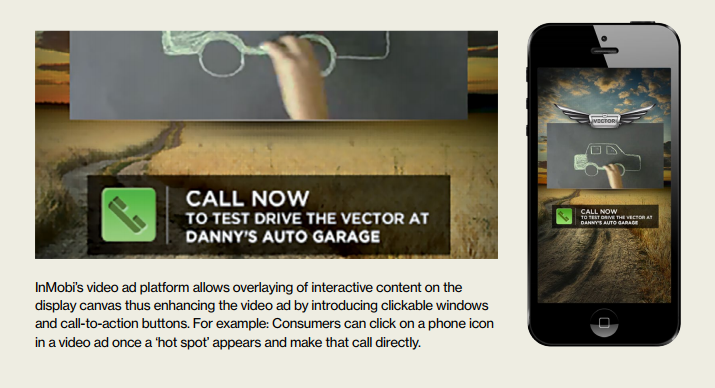
Mobile ads must offer as much value and relevancy as the neighbouring editorial content and embrace the abilities of the device. Great mobile ads have the following qualities or designs:
• Interactivity and a rich user experience:
The smartphone has unique tools that users expect and enjoy using. Ads should take advantage of those native capabilities, such as the gyroscope, accelerometer, swiping, tapping, the camera and voice recognition.
• Receptivity:
The ad needs to reach the right person at the right place at the right time and in the right context or mood: Over time and with technologies now being developed, user behaviours and the very apps on their smart phones will enable advertisers to target not only needs and habits but also context and mood.
• Precise timing:
Ads can be updated based on location for services like car deals (when the customer is car shopping and near a dealer with a special price), weather gear (when it’s going to rain), etc.
• Measured, analysed, improved:
Working internally or with third-party providers, publishers must find ways to track consumers across channels, gather engagement data, and determine what drives conversions in stores and on the mobile device.
Smartphones offer publishers and advertisers incredibly rich options for attracting and delivering value to consumers:
• Location tracking (We all know what that means, so let’s start using it.)
• Location prediction (Analysing location patterns over time can deliver more value than simply knowing where a user is at the moment. By then, it’s often too late to serve an ad that will affect the user’s behaviour. He’s already made his destination decision. Instead, location prediction would enable an advertiser to know, for example, that it’s Friday and the user usually goes out to lunch — it’s better to serve a coupon offer before the consumer leaves the office and, thus, affect his or her destination.)
• Other “natural” smartphone functions: Advertisers should take advantage of click-to-call, appointment scheduling, maps, coupon downloading, videos, gyroscopes or accelerometer, cameras, and talk-back (voice recognition).
• Using the small screen limitation as an advantage (e.g., the IAB has a filmstrip ad unit that looks like a small banner ad until it’s clicked and then it bursts into a full-screen video).
The most preferred (and successful) mobile ad format? Video!
In a 2014 PwC survey of Chinese media consumers, video was far and away the most popular preferred format to consume advertising with 36 per cent of respondents placing it at the top of their list. In a close second place were mobile coupons (33 per cent), but the third preference (banner ads) dropped precipitously in popularity to just 9 per cent.
The most successful platform? Apps!
In-app ad impressions yielded click-through rates (CTR) four times those of mobile web ad impressions and earned eCPMs almost four times those of mobile web ads, according to a late 2014 report by InMobi, the world’s largest independent mobile advertising network.
InMobi also found that, while Android apps had more ad impressions globally, iOS apps matched the Android apps for monetisation and averaged CTRs 14 per cent higher and earned eCPMs more than 40 per cent higher.
Full-screen ad sizes were also found to perform the best, yielding higher CTRs and higher eCPMs than banners, and full-screen tablet ads outperformed full-screen smartphone ads.
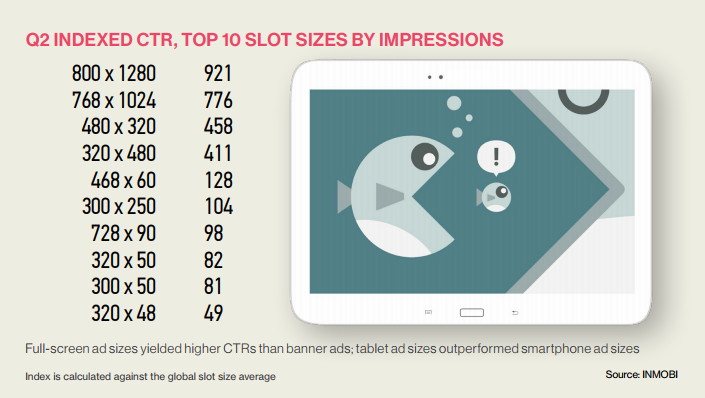
EIGHT RULES FOR MOBILE ADVERTISING SUCCESS
What makes a successful mobile ad is a combination of one or more of the following rules: 1. Location, location, location… plus contextual relevance and value: It’s not enough to know where the consumer is, but also, and more importantly, what he or she is actually doing and how your ad can fit into the context of the activity and provide value. 2. Simplicity and functionality: “Mobile shouldn’t be sexy” according to Rob Griffin, EVP at Communication and Marketing firm Havas Media. It must be simple, easy to use, and work seamlessly from the very first click. Not a lot of typing – just a few clicks and, hey presto, the consumer gets what they came for. 3. Responsiveness: With the wide variety of mobile platforms out there, a mobile ad that is not responsive risks not working, being wasted, irritating the consumer, and damaging the brand. 4. Social media support: Users are influenced by word of mouth from their friends. Promoting the target of a mobile campaign on social media boosts mobile traffic. 5. A path to purchase: Ads that help the consumer easily make the purchase can double the effectiveness of a mobile ad, according to mobile marketing company Retailigence. A good mobile ad should include features such as a real-time check of a product’s availability at a nearby brick-and-mortar store. 6. Something to download: The ultimate value of an ad is its ability to give the consumer value and what better way than to give them something to download and instantly use (apps, coupons, movies, etc.)? 7. In-app placement: Nearly all smartphone owners (93 per cent) use apps daily, and they average three hours of daily in-app engagement, according to a 2014 Forrester/TapJoy study. Of those smartphone users, more than 50 per cent paid attention to in-app ads, 20 per cent took action and 13 per cent purchased something, according to the study. But consumers hate ads that run automatically: 74 per cent found automatic ads annoying. 8. A reward: When asked their ad preferences, consumers’ top priority was not to be interrupted (69 per cent), but their second priority was to be rewarded for spending their time with the ad (67 per cent), according to the Forrester survey. Only 27 per cent ignored a reward ad. And with reward ads, consumers’ positive feelings toward the advertiser doubled to nearly 50 per cent.


